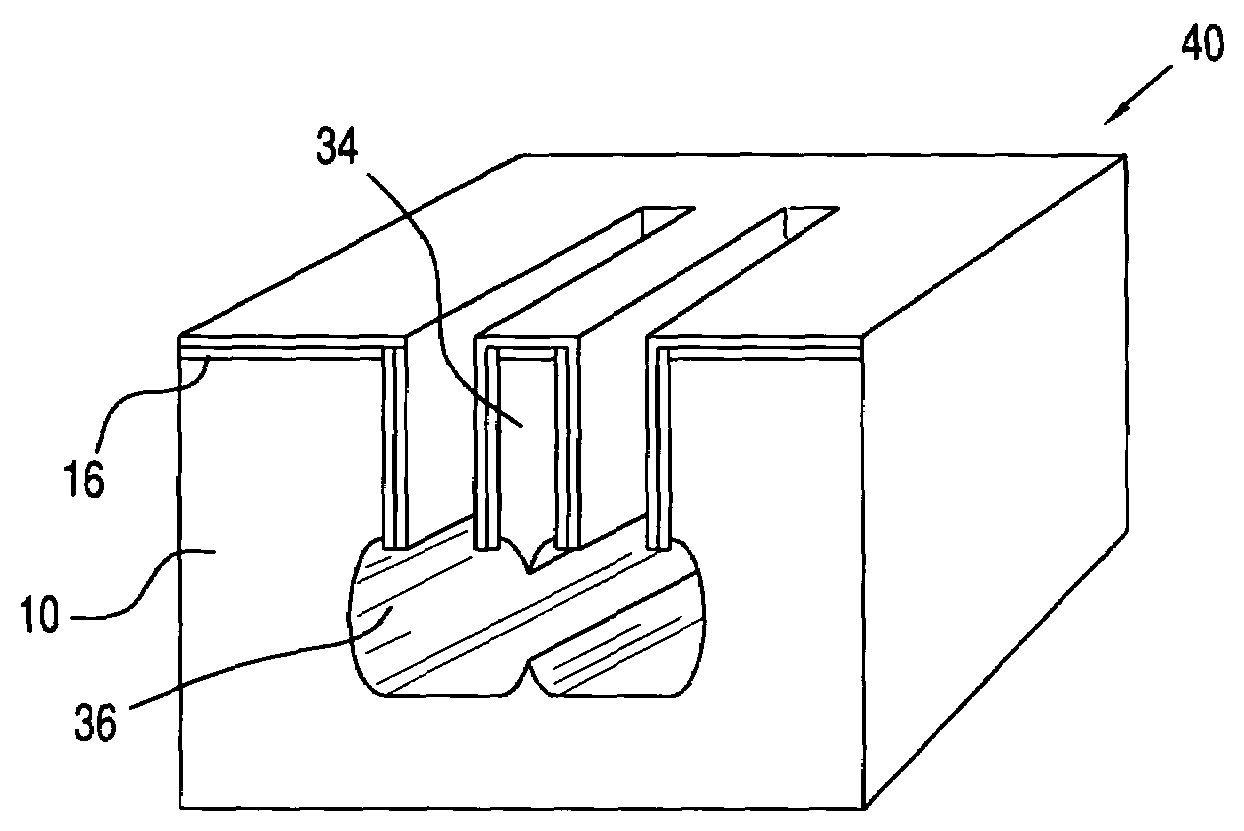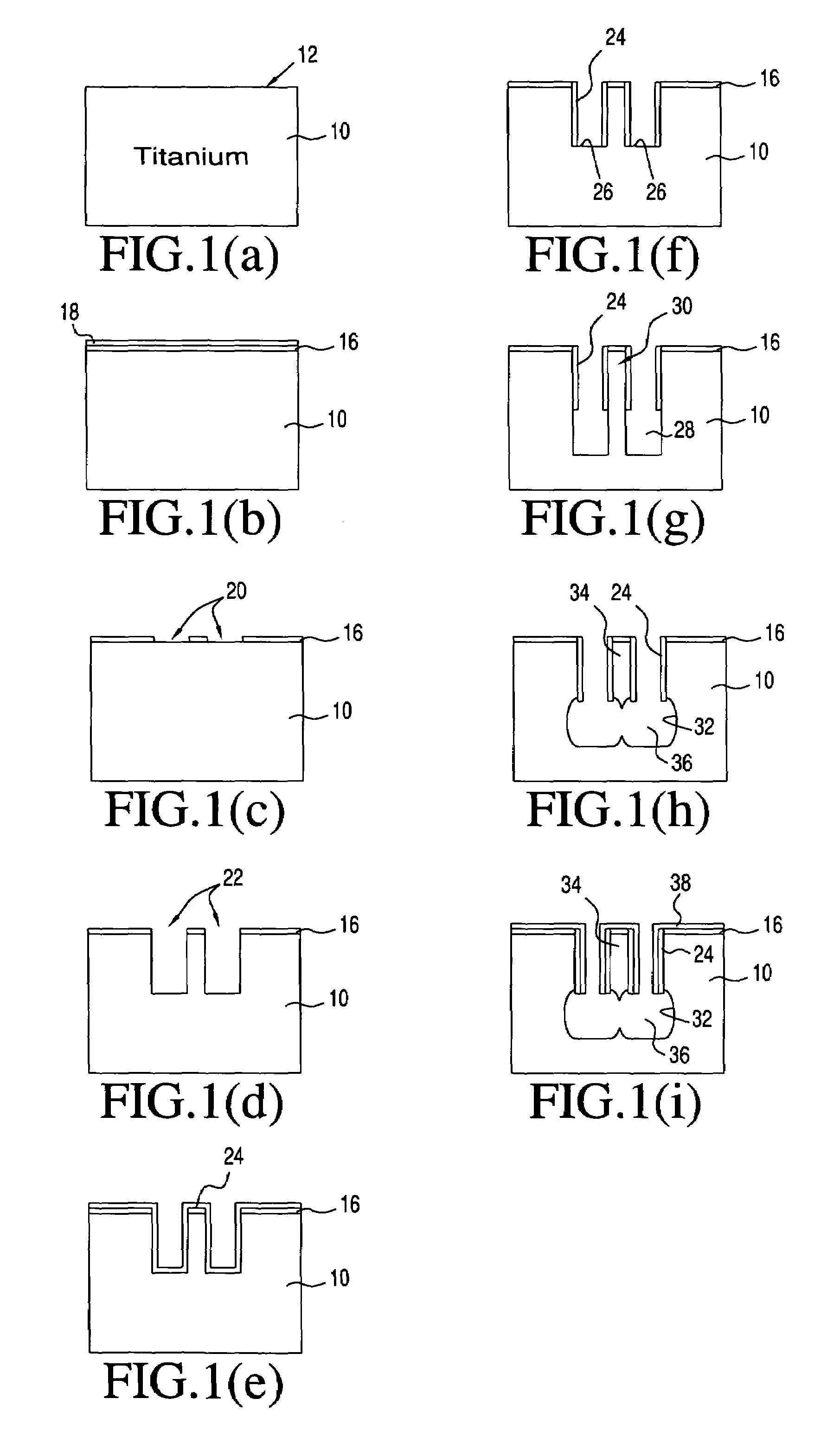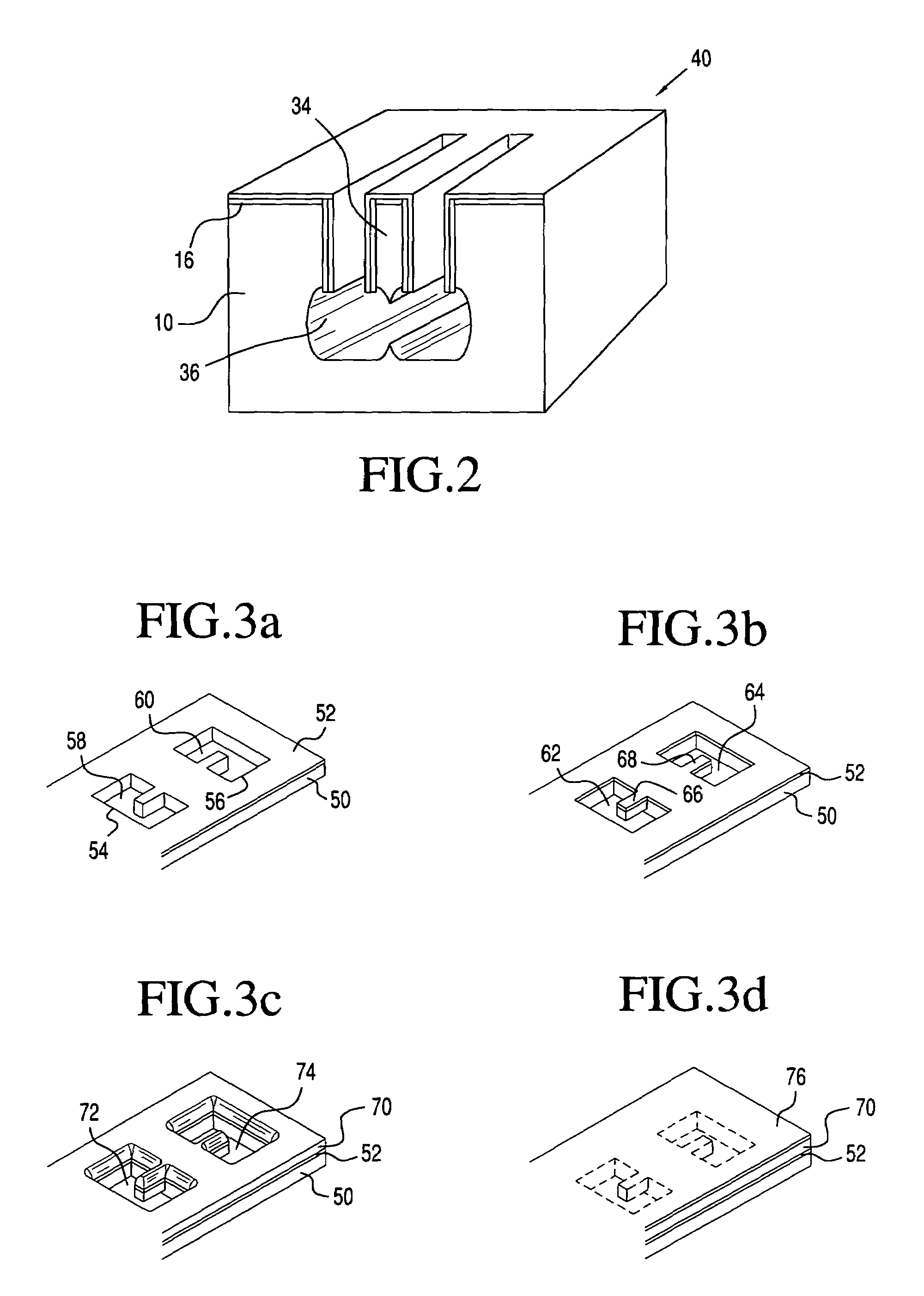Metal MEMS devices and methods of making same
a technology of metal wafers and micro-devices, applied in the direction of micro-structural devices, semiconductor/solid-state device details, coatings, etc., can solve the problems of inability to produce using conventional semiconductor micro-processing tools and processes, and achieve the effect of less expensive, unique properties, and low cost of metal wafers
- Summary
- Abstract
- Description
- Claims
- Application Information
AI Technical Summary
Benefits of technology
Problems solved by technology
Method used
Image
Examples
Embodiment Construction
[0043]In accordance with the invention, a process has been developed for fabricating MEMS devices from metal substrates, preferably single crystal or polycrystalline titanium, which is similar to the SCREAM process used for single crystal silicon described in U.S. Pat. No. 5,316,979. The process of the invention, which for convenience will be referred to as the Ti-MEMS process, is illustrated in cross-section in FIGS. 1(a) to 1(i), wherein a titanium release etch is achieved using a single lithography step, and wherein a titanium deep etch is achieved using a process which will be referred to herein as the “MARIO” process, to be described.
[0044]The Ti-MEMS process includes the ten following steps, which are illustrated in FIGS. 1(a)–1(i). In general, the titanium described in this process can be replaced with any metal, the silicon oxide described in the process can be replaced with any protective insulator, and the titanium oxide described can be replaced with any masking layer, bu...
PUM
| Property | Measurement | Unit |
|---|---|---|
| diameter | aaaaa | aaaaa |
| thick | aaaaa | aaaaa |
| thick | aaaaa | aaaaa |
Abstract
Description
Claims
Application Information
 Login to View More
Login to View More - R&D
- Intellectual Property
- Life Sciences
- Materials
- Tech Scout
- Unparalleled Data Quality
- Higher Quality Content
- 60% Fewer Hallucinations
Browse by: Latest US Patents, China's latest patents, Technical Efficacy Thesaurus, Application Domain, Technology Topic, Popular Technical Reports.
© 2025 PatSnap. All rights reserved.Legal|Privacy policy|Modern Slavery Act Transparency Statement|Sitemap|About US| Contact US: help@patsnap.com



